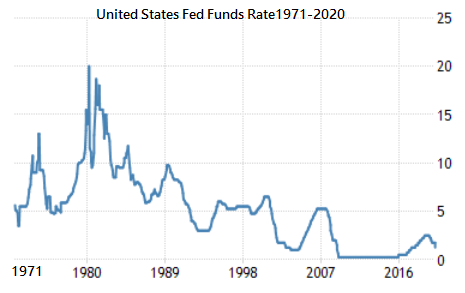Is the Global Economic Reset Imminent?
Zero-Interest Rate Policy.
Most economies around the globe have turned to unconventional means to stimulate economic activity in the years following the Great Recession. Economists believed aggressive monetary policy is an integral part of the recovery process after a financial crisis. After decades of slow growth, the Bank of Japan, the first nation decided to employ a zero-interest rate policy (ZIRP) to combat deflation and promote economic recovery. Thereafter, a similar policy has been implemented by the United States and the United Kingdom.
ZIRP is a method of stimulating growth while keeping interest rates close to zero. Under this policy, the governing central bank can no longer reduce interest rates, rendering conventional monetary policy ineffective. As a result, an unconventional monetary policy such as quantitative easing is used to increase the monetary base. However, as seen in the Eurozone, overextending a zero-interest-rate policy can also result in negative interest rates. Thus, many economists have challenged the value of zero-interest-rate policies, pointing to “the great reset” amongst several other pitfalls.
The world’s Lost Decade(s) [Japan since the 1990s, US & UK since 2008], first used the ZIRP after the world asset price bubble collapse as part of its monetary policy during the subsequent decades in response to declines in asset prices. Consumption and investment remained optimistic since then, the GDP growth rate was higher than 3 percent, and interest rates held steady at 6 percent. However, as stock prices plummeted (1990-1992, 2001-2002 and 2008-2009) GDP growth stagnated and deflation ensued. The consumer price index, which is often used as a proxy measure for inflation rates, declined from 2 percent in 1992 to 0 percent by the current years, and period interest rates fell drastically, fast approaching to negative percent territory.
As a result of ZIRP’s inability to address stagnation and deflation, the world economy fell into a liquidity trap. Despite the relative ineffectiveness of zero-interest rates, until today, worldwide advanced economies continue to use this policy.
Attempting to regain growth, central banks around the world have taken increasingly forceful monetary measures. Of these, perhaps the most controversial and least understood is negative interest rates.
Setting interest rates to below zero are often viewed as an unconventional policy, but it can actually be seen as a continuation of the perfectly normal monetary policy practice of moving the short-term interest rate in response to fluctuations in the economy. There is a limit to how low interest rates can go, but it turns out that this limit is not zero.
Today, the interest rate targeted by the Federal Reserve (FED), the range of the federal funds rate, is currently 1.0% to 1.25%. That’s after the FED emergency cut it half of a percentage point on March 3, 2020. FED regulators are so determined to cut the rate further and this may cause what the most contrarians economists referred to as “liquidity trap”.
A liquidity trap is a situation, described in Keynesian economics, in which, after the rate of interest has fallen to a certain level, liquidity preference may become virtually absolute in the sense that almost everyone prefers holding cash rather than holding a debt which yields so low or zero-rate of interest.
A liquidity trap is caused when people hoard cash because they expect an adverse event such as deflation, insufficient aggregate demand, or war. According to mainstream theory, among the characteristics of a liquidity trap are interest rates that are in negative or close to zero and changes in the money supply that fail to translate into changes in the price level.
Negative Interest Rates Policy.
This refers to a scenario in which cash deposits incur a charge for storage at a bank, rather than receiving interest income. Instead of receiving money on deposits in the form of interest, depositors must pay regularly to keep their money with the bank. This environment is intended to incentivize banks to lend money more freely.
In recent years, central banks in Europe, Scandinavia, and Japan have implemented a negative interest rate policy (NIRP) on excess bank reserves in the financial system. This unorthodox monetary policy tool is designed to spur economic growth through spending and investment as depositors would be incentivized to spend cash rather than store it at the bank and incur a guaranteed loss. The accumulated effects, the GDP Growth, Inverted Yield-Curve, Unemployment severely waned as well as resulted in the stock market selloff that we experienced in the recent weeks.
CONCLUSION: If Federal Reserve will implement NIRP, with ballooned 122 Trillion national debts, and significantly declined economy, in my opinion, it may translate into great global financial and economic depression even worse than 1929 Great Depression. When this event does happen, it will fundamentally change the world. Overnight governments will fall, borders will be redrawn, wars will be waged and economies will collapse.
DISCLAIMER: I'm not a Certified Financial Planner. Published herein is my personal opinion and should not be construed as a recommendation, an offer, or solicitation for the subscription, purchase or sale of any securities.
Related Topics:
Are we in the recession territory?
The Stock Market Doom-And-Gloom of 2020!
Is economic collapse looming?
2020 My Philippine Stocks Outlook
2019 Best/Worst Philippine Stocks Performance
Please upvote and follow me on https://steemit.com/@php-ph.

The global financial system is for sure going to collapse soon. It will probably hyper inflate first, but it is beginning to collapse. At first crypto’s will be hit hard too and then they will come back, but fiat won’t as it’s all just a central banking and government scam going back over 100 years. Many central banks have announced their digital currency projects which they will try to force on to people at some point. Perhaps they will try to get new governments to form and ban crypto’s, but that won’t do anything ultimately.
Posted using Partiko iOS